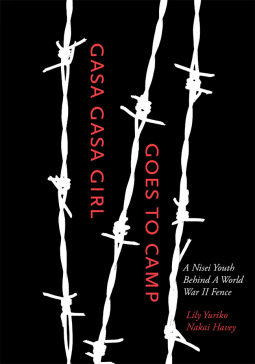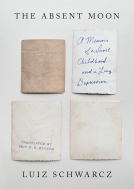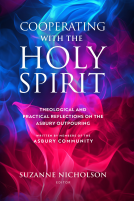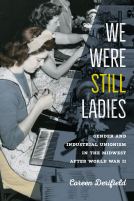
Gasa Gasa Girl Goes to Camp
A Nisei Youth Behind A World War II Fence
by Lily Yuriko Nakai Havey
This title was previously available on NetGalley and is now archived.
Send NetGalley books directly to your Kindle or Kindle app
1
To read on a Kindle or Kindle app, please add kindle@netgalley.com as an approved email address to receive files in your Amazon account. Click here for step-by-step instructions.
2
Also find your Kindle email address within your Amazon account, and enter it here.
Pub Date Jun 15 2014 | Archive Date Dec 08 2015
The University of Utah Press | University of Utah Press
Description
In this creative memoir, Lily Havey combines storytelling, watercolor, and personal photographs to recount her youth in two Japanese-American internment camps during World War II. In short vignettes snapshots of people, recreated scenes and events a ten-year-old girl develops into a teenager while confined. Vintage photographs reveal the historical, cultural, and familial contexts of that growth and of the Nakais’ dislocation. The paintings and her animated writing together pull us into a turbulent era when America disgracefully incarcerated, without due process, thousands of American citizens because of their race.
These stories of love, loss, and discovery recall a girl balancing precariously between childhood and adolescence. In turn wrenching, funny, touching, and biting but consistently engrossing, they elucidate the daily challenges of life in the camp and the internees’ many adaptations.
Winner of the Evans Biography Award.
Selected by the American Library Association as one the Best of the Best from University Presses.
Finalist in the cover design category in the Southwest Book Design and Production Awards.
Advance Praise
—Greg Robinson, author of A Tragedy of Democracy: Japanese Confinement in North America and After Camp: Portraits in Midcentury Japanese American Life and Politics
“The writing is at times highly evocative, but it is the addition of Havey's artwork that sets this work apart from and adds a new dimension to the Japanese concentration camp story. Havey includes numerous small details that make the period come alive and shed new light on the prison camp experience.”
—Nancy Matsumoto, writer and contributor to Time, Newsweek, The Wall Street Journal, The New York Times, and The Densho Encyclopedia of the Japanese American Incarceration
“Through a sophisticated blend of artwork, prose, and photographic images, Lily Yuriko Nakai Havey has crafted in Gasa Gasa Girl Goes to Camp what is assuredly among the very most exquisite, insightful, and candid memoirs of the World War II Japanese American confinement experience.”
—Arthur A. Hansen, Professor Emeritus of History and Asian American Studies, California State University, Fullerton
“Lily Yuriko Nakai Havey has crafted in Gasa Gasa Girl Goes to Camp what is assuredly the very most exquisite, insightful, and candid memoirs of the World War II Japanese American experience…. This is a book that must be read, shared, discussed, taught,—and savored!”
—Nichi Bei Weekly
“This is a one-of-a-kind memoir, reading like the best fiction yet shot through with scenes that, whether in paint or print, evoke the vivid reality of a life unfairly confined. I loved every page.”—The King’s English Bookshop
“What an absolutely amazing book! There can be no other estimation for such an important document that is part of the long-standing recovery effort related to the Japanese American internment experience.… One must pick up this essential and new addition to the canon of internment literatures.” –Asian American Literature Fans
Available Editions
| EDITION | Other Format |
| ISBN | 9781607813439 |
| PRICE | $34.95 (USD) |
Featured Reviews
 Sharon C, Librarian
Sharon C, Librarian
This chapter of American history has always bothered me. I've read about it in several fictional works like Snow Falling on Cedar and The Buddha in the Attic, but this is the first time I've read a nonfiction personal recounting. It's not just about the camps but about the Japanese culture at that time and how unvalued a woman was - no picnic to be a Japanese woman in that period. And then to have your life taken away and be imprisioned in an inhospitable environment. The author's narrative coupled by her emotion artwork will be appreciated by anyone interested in this era. Unjustly imprisioned, they were equally unjustly released with nothing, having had everything stripped away, and no home to return to. My husband and I visited Manzanar a couple years ago. It's unimaginable and a blight on our country's record.
 Lois G, Librarian
Lois G, Librarian
The period of time during which America shamefully interred citizens of Japanese heritage in prison camps is explored in this accessible autobiography. Covering the period of the author's late childhood and early adolescence, author Yuriko Nakai talks about the bare and often uncomfortable conditions of living in Amache, a Southern Colorado camp, and attempting to continue on with life. The author does not sugar coat her existence in the camp, but she does convey that under dire circumstances, Japanese people created a network of schools, adult ed, and a social life under the watchful eye of American guards. More than other books on the subject, this account will be accessible too elementary and middle school students and it is never too early to explore the inhumanity and bigotry of wartime America despite the fact that a war was being fought against the genocide on other continents. Living in close proximity with her mother, Yuriko learns about her mother's early life in Japan, her "picture bride" marriage to a taciturn husband, and her unfulfilled aspirations. Yuriko's mother is a fully fleshed out character who actually seems to thrive while practicing the Buddhist philosophies of forbearance and kharma. Yuriko, a hyperactive "monkey girl," may strain at the limits of her life but also adapts in unexpected ways. It is Yuriko's father who does the most poorly, joining other Japanese men in an attempt to move inland where they could make more money for their families and also escape the restrictions of the camp. This is an important topic, especially if paired with other books about the period, because America was not innocent in its treatment of the Japanese. In response to their imprisonment, many Japanese men fought honorably on the European front, more than proving their loyalty to their adopted land. My only quibble with the book is that it is so personal an account that it does not set the story in relief against the events outside the camp. As an example, the author does not address the fact that the governor of Colorado was a portrait in courage, fighting the government on the internment of citizens and closing Amache at the earliest possible moment. However, this is an excellent introduction to the subject and perfectly suited for ages 10 and up.
 Librarian 247951
Librarian 247951
A fascinating and personal insight to a time in history often ignored. Havey weaves her story through photographs, paintings, and a collection of memories of her time spent in two Japanese-American internment camps. I recommend this to anyone interested in knowing more about the Japanese-American internment camps, or Japanese-American culture.
 beth e, Librarian
beth e, Librarian
Gasa Gasa girl is a memoir of a girl's experience growing up in two Japanese American concentration camps. This book is not your average memoir as the author draws on moments in time, with paintings and photographs to round out the moments that show the overall experience of how it felt to lose everything and end up in the camps. This part of history is not often discussed or taught, and this book is a most welcome addition to the literature about the impact of America's outrageous choice to put people into camps, reducing their lives to small, oft times hopeless ones. I highly recommend this book
Readers who liked this book also liked:
Rev. Dr. Suzanne Nicholson
Christian, Nonfiction (Adult), Religion & Spirituality
Michelle Cassandra Johnson; Amy Burtaine
Health, Mind & Body, Outdoors & Nature, Religion & Spirituality


















